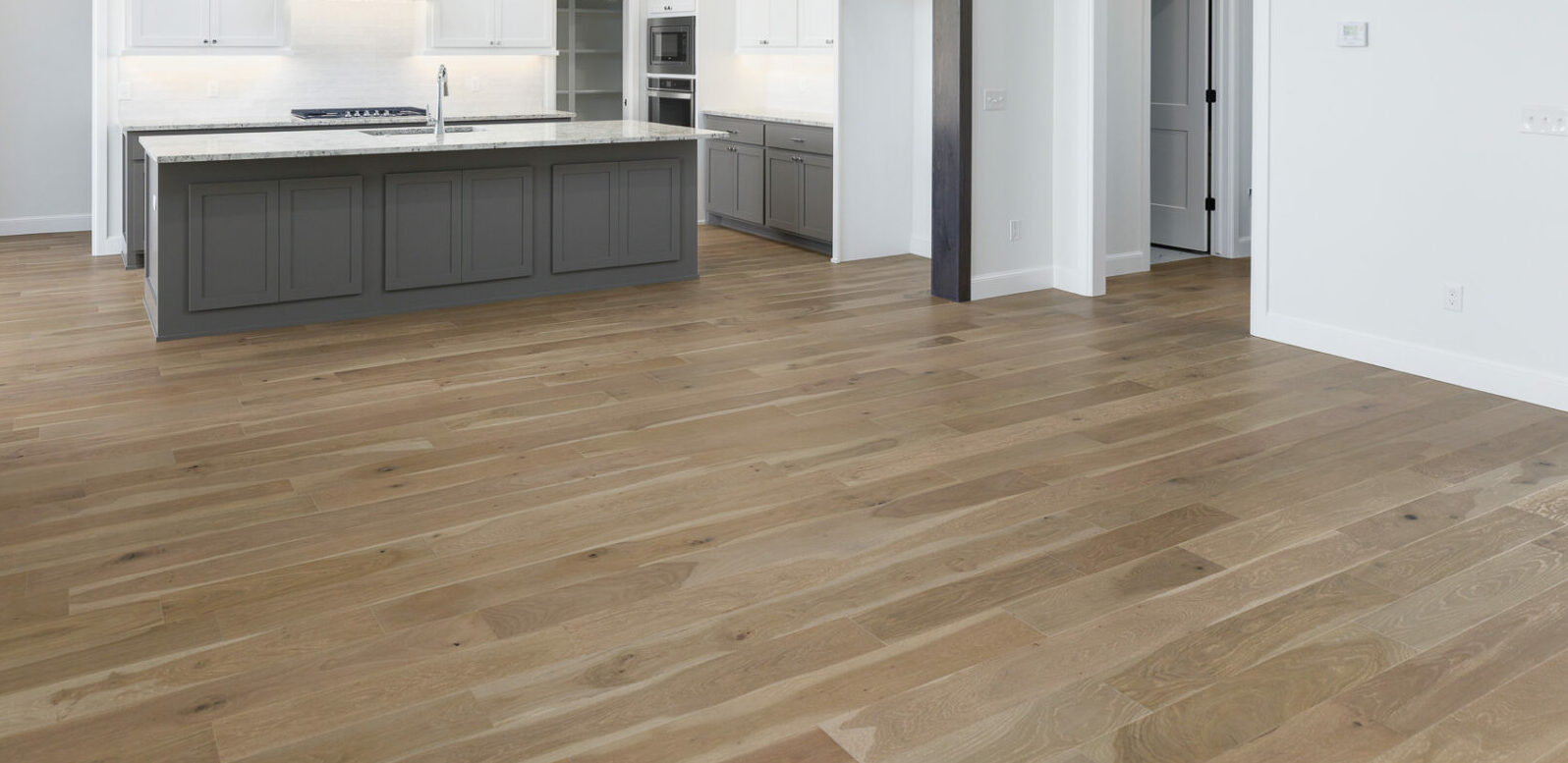Engineered Wood vs. Hardwood
May 14th, 2024 | by Madison Stone

Pete & Co. – Engineered Wood vs. Hardwood Floors
Flooring is one of the most important selections a homeowner will make during their build. A floor’s coloring and texture can make or break the design of an entire room, and its quality plays a huge role in the value of a home. It’s no surprise, then, that wood floors are so desirable.
There are two popular types of wood flooring: hardwood and engineered wood. Both are durable, both are high-quality, and both come in enough variety to suit anyone’s tastes. However, they’re not the same product, and both have their own pros and cons. This week’s post is a brief explanation of those differences—and why we recommend engineered wood for almost all of our projects.
Q: What is engineered wood flooring?
A: Engineered wood flooring consists of a top layer of real hardwood bonded to several layers of durable plywood. This mixing of materials allows for the beauty and quality of hardwood to shine without the extra cost and fuss solid hardwood brings.
…

…
Engineered wood is less costly than hardwood, but the drawback is that it can’t be refinished more than once (if at all). However, if engineered wood is well-maintained, this shouldn’t be a problem—most floors have anywhere from a 25-50 year lifespan.
…

Engineered wood is also much more DIY-friendly than hardwood and doesn’t require a wooden subfloor. Installing a “floating” floor—where interlocking edges allow each board to click together like a puzzle—is fairly simple with a little bit of planning. For the more experienced flooring installer (or those building a house with Stonewall), the boards can also be glued directly to the concrete.
…
Q: What is hardwood flooring?
A: Hardwood flooring is made of one component: hardwood. The all-wood core is what gives hardwood a bit more of a premium feel than engineered wood, even if it can be hard to tell the difference once the boards are laid.
The biggest draw to hardwood is definitely its longevity—it will last the lifetime of the home, and, because it’s pure wood from the top down, it can be refinished over and over again.
…

Another pro of hardwood is that it can come finished or unfinished, which allows for much more customization than engineered wood. However, it tends to be more expensive, especially with added customization. It also requires more maintenance and care, and it’s tricker to install as the boards must be nailed to a wooden subfloor.
…
Q: How do I choose a wood flooring?
A: Whether you’re going with engineered wood or hardwood, the simple answer is to weigh the pros and cons and decide what fits your personal needs and style. For example, if you already have a color palette to match, then you’ll want to pay more attention to finishes and coloring. Or, if you have pets, you might need a more durable option.
Durability
How hard is hardwood, really? It depends.

The Janka Hardness Test (not to be confused with Jenga) provides a quick snapshot of how durable the more popular species of wood are. In the Janka test, a steel ball is pressed into a wood until it becomes embedded—the more force needed to embed the ball, the harder the wood.
(Interestingly enough, the terms “hardwood” and “softwood” have more to do with the types of seed a tree produces than the durability of its wood. The more you know!)
…
Style
While we can’t tell you what styles you prefer or what best compliments your home, we can provide dozens of options to choose from via R&W Design (aka RealWoodFloors, aka Master’s Craft, aka our favorite wood floor place). We’ve used their flooring for years, and we can’t compliment them enough! Visit their website HERE 👀—or, if you’re in the neighborhood, swing by to peruse dozens of samples at our model home.






…
